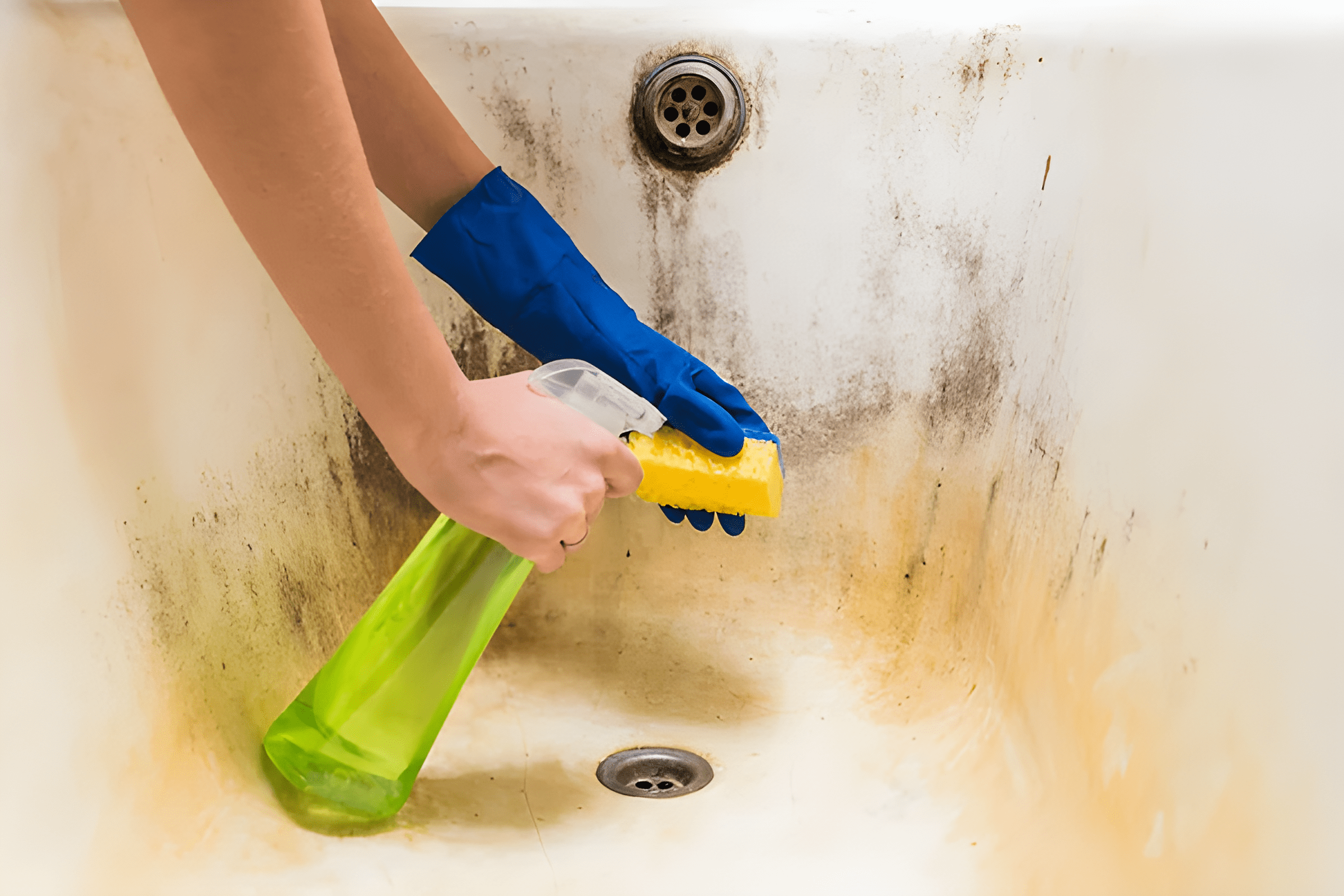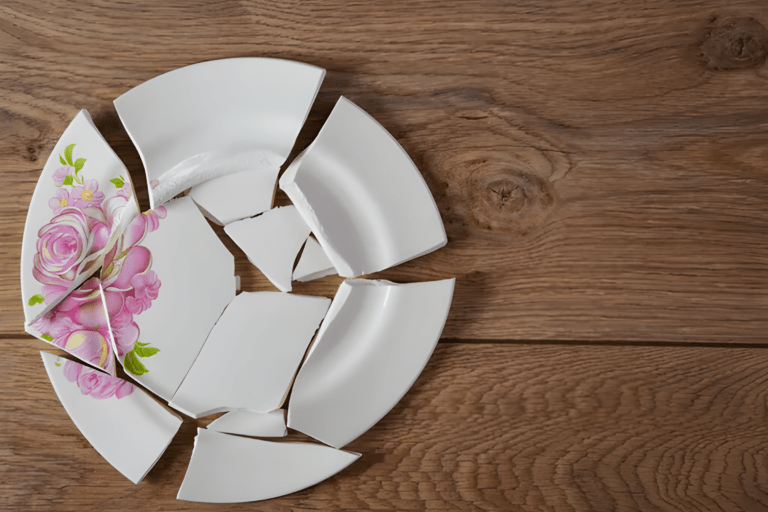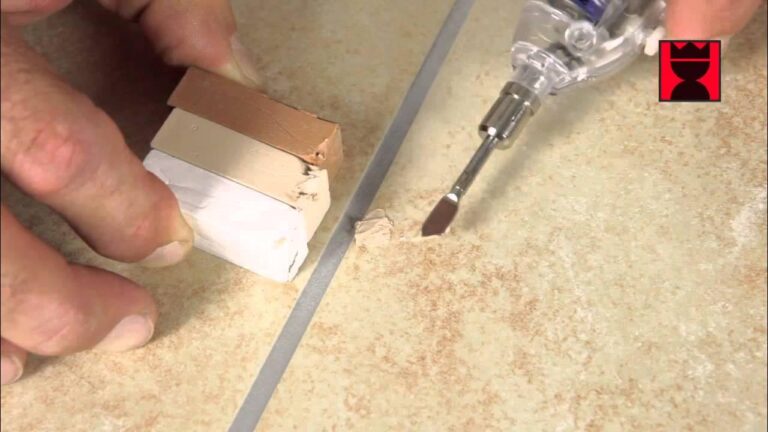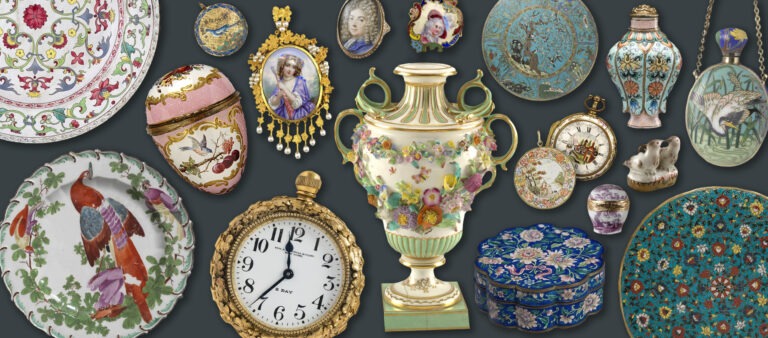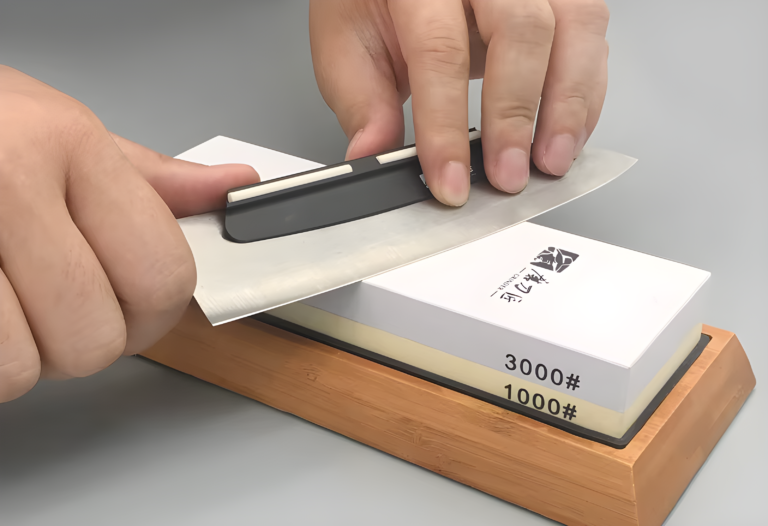Best Ways to Remove Rust from Porcelain Bathtubs
Rust stains on a porcelain bathtub can be an eyesore, making even the cleanest bathroom look neglected. These stains often result from prolonged exposure to metal objects, high iron content in water, or moisture buildup over time. While rust might seem stubborn, the good news is that with the right approach, you can eliminate it without harming your tub’s surface.
Ignoring rust stains for too long can lead to deeper discoloration that becomes increasingly difficult to remove. Early intervention is key.
Why Do Rust Stains Form on Porcelain?
Rust stains on porcelain bathtubs can form due to several factors, most of which involve prolonged exposure to moisture and metal. Understanding the causes can help in both prevention and effective removal.
One of the most common reasons is the presence of metal objects left on the porcelain surface. Items like shaving cream cans, razors, and metal soap dishes tend to oxidize when exposed to water. Over time, this oxidation process leads to rust, which can transfer onto the porcelain and leave unsightly stains.
Another significant factor is the quality of the water supply. If your water has a high iron content, either from well water or aging pipes, rust particles can accumulate on the bathtub’s surface. When the water evaporates, it leaves behind these iron deposits, which gradually develop into noticeable stains.
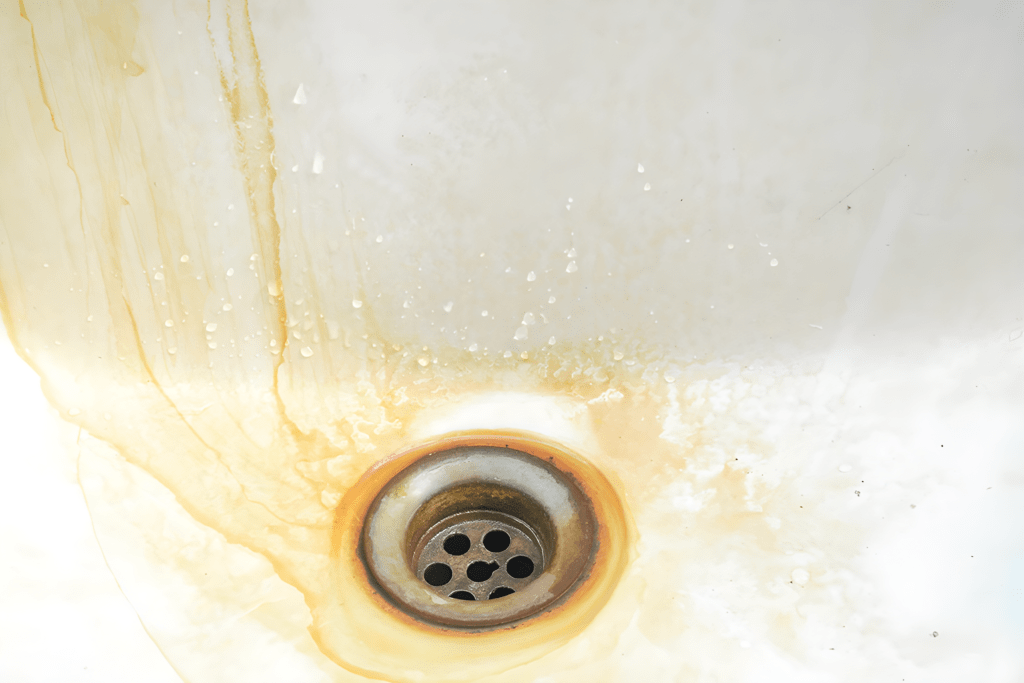
In some cases, old plumbing systems contribute to the problem. If your home has aging pipes made of iron or steel, they may corrode over time, introducing rust particles into the water. This rust eventually settles on surfaces like your bathtub, especially in areas where water tends to pool.
Additionally, poor ventilation and excess humidity can exacerbate the issue. Bathrooms with inadequate airflow create an environment where water lingers on surfaces longer, accelerating the oxidation process and making it easier for rust stains to develop.
Regular maintenance and proper drying techniques can help prevent rust stains from forming. Ensuring good ventilation and avoiding prolonged exposure to metal objects will go a long way in keeping your bathtub pristine.
Choosing the Right Cleaning Method
Selecting the best method for removing rust stains from a porcelain bathtub depends on several factors, including the severity of the stain, the materials you have on hand, and the condition of the porcelain surface. Since porcelain is durable but can be damaged by harsh chemicals and abrasive tools, it’s essential to choose a method that is both effective and safe.
The gentlest approach involves using natural acidic cleaners, such as white vinegar or lemon juice. These ingredients help break down rust without causing any harm to the porcelain finish. They work well for light stains that haven’t deeply set into the surface. Simply applying the acid, allowing it to sit, and then gently scrubbing can yield noticeable results.
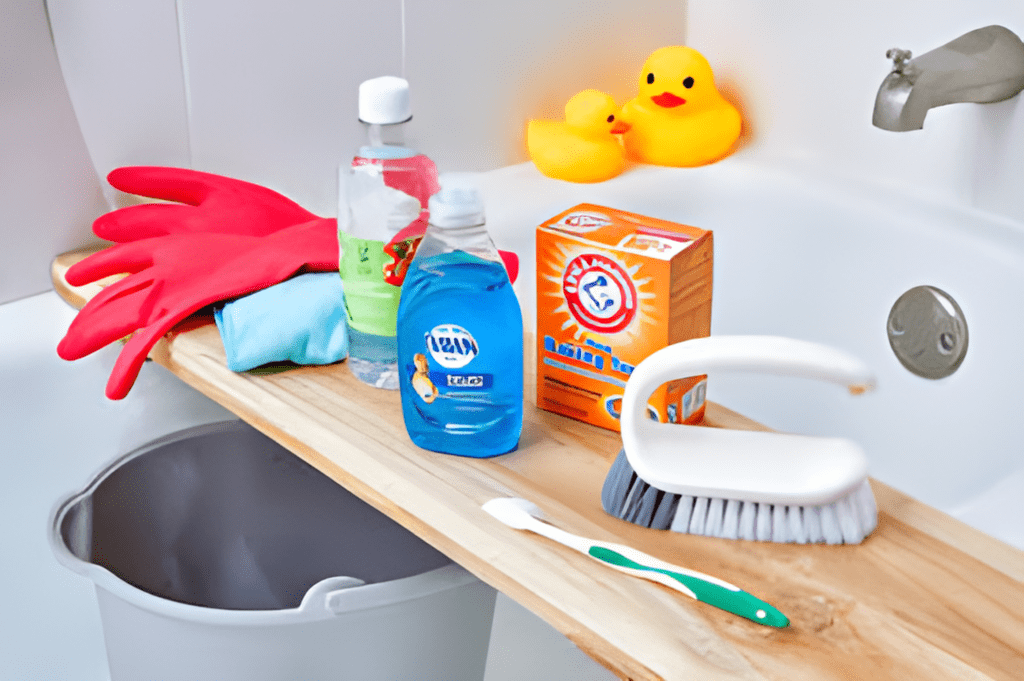
For moderate stains, a paste made from baking soda and hydrogen peroxide offers a more powerful solution. Baking soda acts as a mild abrasive that lifts the rust, while hydrogen peroxide enhances the cleaning process with its oxidizing properties. This method is particularly useful when vinegar alone isn’t strong enough to remove the stain completely.
If the stain is stubborn and has been sitting for a long time, a commercial rust remover designed for porcelain surfaces may be necessary. However, caution is required when using chemical-based cleaners, as some products contain harsh acids that can dull or damage the porcelain’s glossy finish. Always check the label to ensure the product is safe for use on porcelain and test it on a small, inconspicuous area before applying it to the entire stain.
Using abrasive scrubbers, such as steel wool or rough brushes, can scratch the porcelain surface, making it more prone to future stains. Stick to soft cloths, sponges, or gentle scrub brushes to preserve the bathtub’s finish.
In cases where DIY methods fail, professional cleaning services offer specialized solutions. They use industrial-grade products that effectively break down rust while ensuring the porcelain remains intact. If rust stains persist despite multiple cleaning attempts, seeking professional help may be the best option.
Ultimately, the right cleaning method depends on balancing effectiveness with surface protection. Starting with the mildest option and progressing to stronger solutions if necessary is the best approach to restoring your bathtub’s pristine appearance.
Step-by-Step Rust Removal Process
Successfully removing rust stains from a porcelain bathtub requires patience and the right approach. Following a structured cleaning process ensures that stains are lifted without damaging the porcelain’s smooth surface. Here’s a step-by-step method to restore your bathtub’s pristine look.
Step 1: Prepare Your Cleaning Area
Before starting, clear the bathtub of any objects that could get in the way. Remove metal items such as razors, cans, or soap dishes that may be contributing to the rust problem. Open a window or turn on the bathroom fan for proper ventilation, especially if you plan to use commercial cleaning products.
Step 2: Choose Your Cleaning Solution
Depending on the severity of the stain, select an appropriate cleaning agent:
- For mild stains, white vinegar or lemon juice works well due to their natural acidity.
- For moderate stains, a paste made from baking soda and hydrogen peroxide provides a gentle but effective cleaning action.
- For stubborn stains, a commercial rust remover specifically designed for porcelain may be required.
Step 3: Apply the Cleaning Solution
For vinegar or lemon juice, soak a clean cloth in the liquid and place it over the rust stain. Let it sit for about 15 to 20 minutes, allowing the acid to break down the rust.
If using baking soda and hydrogen peroxide, mix them into a thick paste and spread it directly over the stained area. Allow it to sit for 30 minutes.
For commercial cleaners, always follow the manufacturer’s instructions to prevent any damage to the porcelain surface.
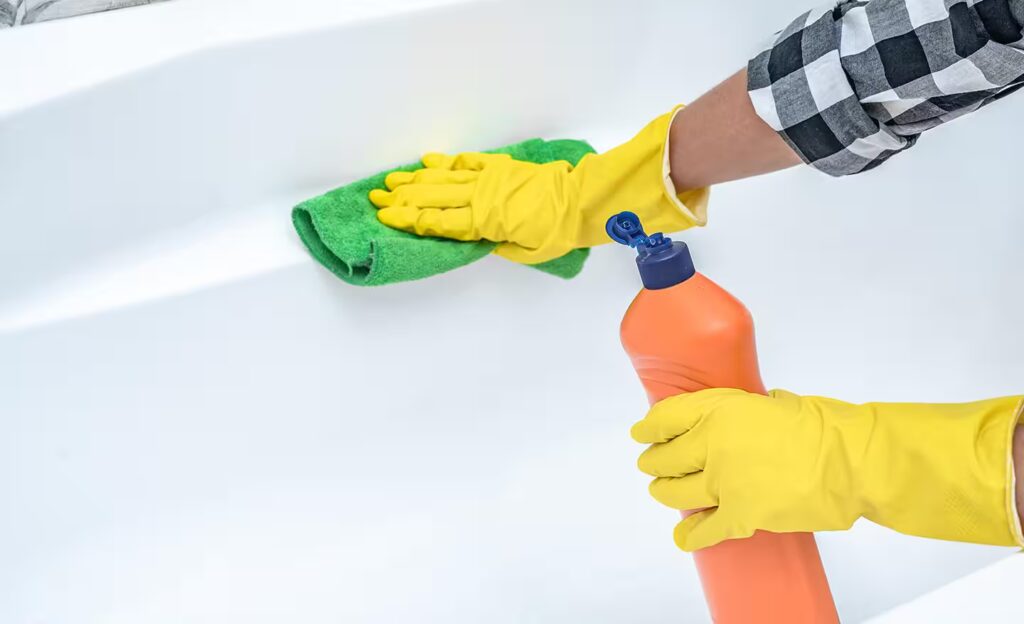
Step 4: Gently Scrub the Stain
Using a soft sponge, microfiber cloth, or a non-abrasive scrub brush, gently rub the stained area in circular motions. Avoid using steel wool or rough brushes, as they can scratch the porcelain’s surface.
Step 5: Rinse the Bathtub
Once the stain starts to lift, rinse the bathtub thoroughly with warm water to remove any residue from the cleaning agents. Check for any remaining discoloration and repeat the process if necessary.
Step 6: Dry and Protect the Surface
After removing the stain, wipe the bathtub dry with a clean towel to prevent future rust formation. To add an extra layer of protection, consider applying a thin coat of car wax or a porcelain sealant to create a moisture-resistant barrier.
Regularly drying your bathtub and avoiding prolonged exposure to metal objects can significantly reduce the chances of rust stains reappearing.
By following this step-by-step process, you can effectively remove rust stains from your porcelain bathtub and keep it looking spotless for years to come.
Preventing Rust Stains in the Future
Keeping rust stains from forming in the first place is far easier than removing them later. With a few simple habits and preventative measures, you can protect your porcelain bathtub from unsightly stains and maintain its pristine appearance for years.
Keep the Bathtub Dry
Moisture is the main culprit behind rust stains, as it creates the perfect environment for oxidation. After each use, wipe down the bathtub with a dry microfiber cloth or towel to remove any standing water. This small habit can make a significant difference in preventing rust from forming.
Remove Metal Objects
Leaving metal items such as shaving razors, cans, or metal soap dishes on the bathtub’s surface can lead to rust stains over time. Even small metal fixtures, like drain covers or screws, can cause rust if they begin to corrode. If possible, replace these with rust-resistant alternatives, such as plastic or ceramic accessories. <blockquote>Storing metal objects on a raised shelf or using a non-metal soap dish can help keep your bathtub free from rust stains.</blockquote>
Use a Water Softener
If your home has hard water with a high iron content, rust stains can develop more frequently. Installing a water softener reduces the amount of iron and other minerals in the water, preventing rust buildup on porcelain surfaces.
Apply a Protective Coating
Using a thin layer of car wax or a dedicated porcelain sealant can help create a water-resistant barrier on your bathtub’s surface. This not only repels moisture but also makes cleaning easier by preventing stains from sticking.
Regular Cleaning Routine
Establishing a weekly cleaning schedule with mild, non-abrasive cleaners can prevent rust stains from taking hold. A simple wipe-down with white vinegar or baking soda can help keep the porcelain looking fresh and stain-free.
Fix Leaky Faucets
Dripping water can leave mineral deposits and promote rust formation, especially if the water contains iron. Repair any leaky faucets or plumbing issues promptly to avoid long-term damage to your bathtub.
By incorporating these preventative steps into your routine, you can keep your porcelain bathtub looking spotless and free from rust stains, saving yourself time and effort in the long run.
When Should You Call a Professional?
If rust stains persist despite multiple cleaning attempts, or if they’ve deeply set into the porcelain, professional help may be the best option. Experts use specialized cleaners and techniques that remove stains without damaging the surface. Additionally, if rust is coming from old pipes or fixtures, replacing them might be necessary to prevent future staining.
If rust stains keep returning, the issue may be more than just surface-level. Investigate potential plumbing problems to prevent recurring discoloration.
A sparkling, rust-free bathtub not only looks great but also extends the life of your porcelain surface. By using the right cleaning methods and preventive measures, you can keep rust stains at bay and maintain a pristine bathtub for years to come. Whether you choose natural cleaning solutions or professional services, consistency is key in preserving your bathroom’s beauty.


